Yucheng Jin
Navigating User Experience of ChatGPT-based Conversational Recommender Systems: The Effects of Prompt Guidance and Recommendation Domain
May 22, 2024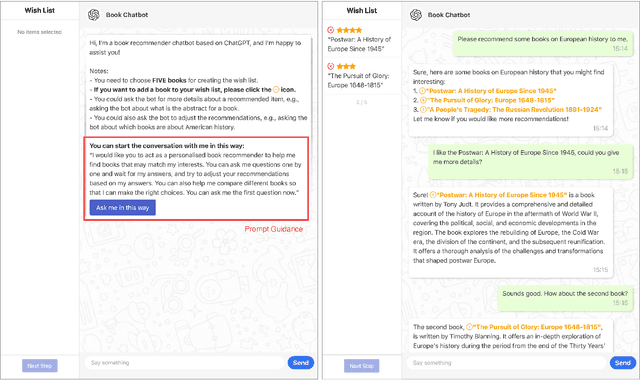
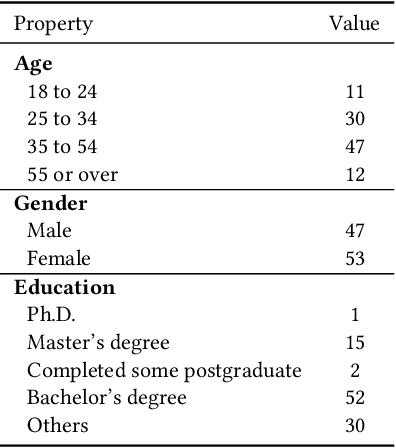
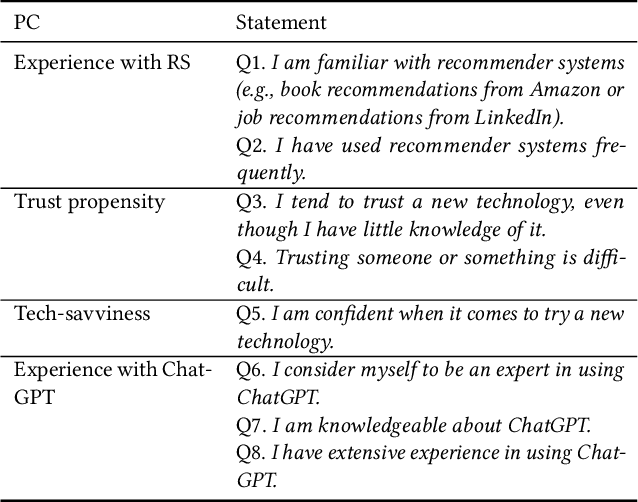
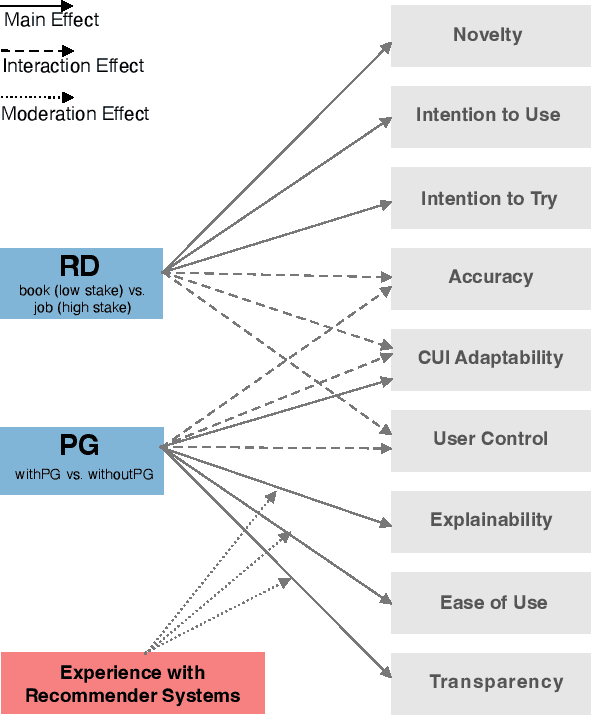
Abstract:Conversational recommender systems (CRS) enable users to articulate their preferences and provide feedback through natural language. With the advent of large language models (LLMs), the potential to enhance user engagement with CRS and augment the recommendation process with LLM-generated content has received increasing attention. However, the efficacy of LLM-powered CRS is contingent upon the use of prompts, and the subjective perception of recommendation quality can differ across various recommendation domains. Therefore, we have developed a ChatGPT-based CRS to investigate the impact of these two factors, prompt guidance (PG) and recommendation domain (RD), on the overall user experience of the system. We conducted an online empirical study (N = 100) by employing a mixed-method approach that utilized a between-subjects design for the variable of PG (with vs. without) and a within-subjects design for RD (book recommendations vs. job recommendations). The findings reveal that PG can substantially enhance the system's explainability, adaptability, perceived ease of use, and transparency. Moreover, users are inclined to perceive a greater sense of novelty and demonstrate a higher propensity to engage with and try recommended items in the context of book recommendations as opposed to job recommendations. Furthermore, the influence of PG on certain user experience metrics and interactive behaviors appears to be modulated by the recommendation domain, as evidenced by the interaction effects between the two examined factors. This work contributes to the user-centered evaluation of ChatGPT-based CRS by investigating two prominent factors and offers practical design guidance.
Beyond the Known: Novel Class Discovery for Open-world Graph Learning
Mar 29, 2024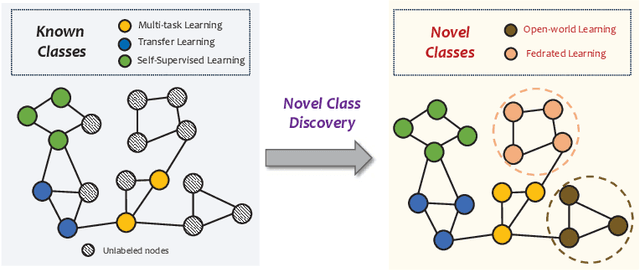

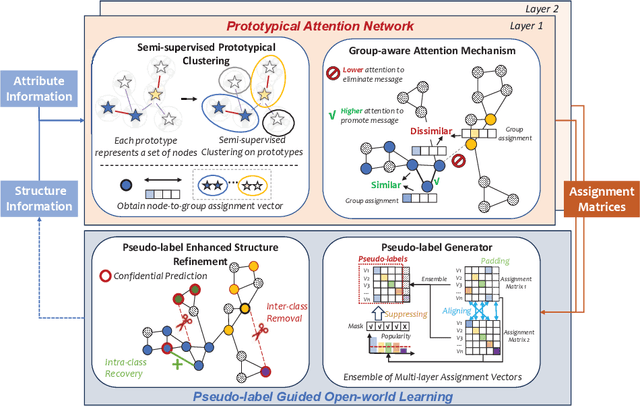
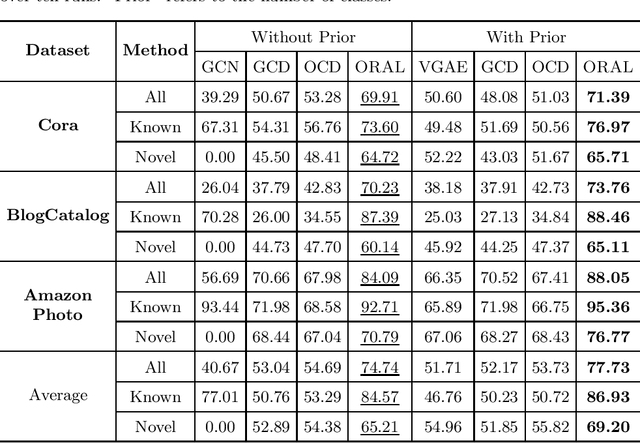
Abstract:Node classification on graphs is of great importance in many applications. Due to the limited labeling capability and evolution in real-world open scenarios, novel classes can emerge on unlabeled testing nodes. However, little attention has been paid to novel class discovery on graphs. Discovering novel classes is challenging as novel and known class nodes are correlated by edges, which makes their representations indistinguishable when applying message passing GNNs. Furthermore, the novel classes lack labeling information to guide the learning process. In this paper, we propose a novel method Open-world gRAph neuraL network (ORAL) to tackle these challenges. ORAL first detects correlations between classes through semi-supervised prototypical learning. Inter-class correlations are subsequently eliminated by the prototypical attention network, leading to distinctive representations for different classes. Furthermore, to fully explore multi-scale graph features for alleviating label deficiencies, ORAL generates pseudo-labels by aligning and ensembling label estimations from multiple stacked prototypical attention networks. Extensive experiments on several benchmark datasets show the effectiveness of our proposed method.
Exploring the Design of Generative AI in Supporting Music-based Reminiscence for Older Adults
Mar 03, 2024Abstract:Music-based reminiscence has the potential to positively impact the psychological well-being of older adults. However, the aging process and physiological changes, such as memory decline and limited verbal communication, may impede the ability of older adults to recall their memories and life experiences. Given the advanced capabilities of generative artificial intelligence (AI) systems, such as generated conversations and images, and their potential to facilitate the reminiscing process, this study aims to explore the design of generative AI to support music-based reminiscence in older adults. This study follows a user-centered design approach incorporating various stages, including detailed interviews with two social workers and two design workshops (involving ten older adults). Our work contributes to an in-depth understanding of older adults' attitudes toward utilizing generative AI for supporting music-based reminiscence and identifies concrete design considerations for the future design of generative AI to enhance the reminiscence experience of older adults.
TIGER: Temporal Interaction Graph Embedding with Restarts
Feb 16, 2023



Abstract:Temporal interaction graphs (TIGs), consisting of sequences of timestamped interaction events, are prevalent in fields like e-commerce and social networks. To better learn dynamic node embeddings that vary over time, researchers have proposed a series of temporal graph neural networks for TIGs. However, due to the entangled temporal and structural dependencies, existing methods have to process the sequence of events chronologically and consecutively to ensure node representations are up-to-date. This prevents existing models from parallelization and reduces their flexibility in industrial applications. To tackle the above challenge, in this paper, we propose TIGER, a TIG embedding model that can restart at any timestamp. We introduce a restarter module that generates surrogate representations acting as the warm initialization of node representations. By restarting from multiple timestamps simultaneously, we divide the sequence into multiple chunks and naturally enable the parallelization of the model. Moreover, in contrast to previous models that utilize a single memory unit, we introduce a dual memory module to better exploit neighborhood information and alleviate the staleness problem. Extensive experiments on four public datasets and one industrial dataset are conducted, and the results verify both the effectiveness and the efficiency of our work.
Reinforcement Learning for Resilient Power Grids
Dec 08, 2022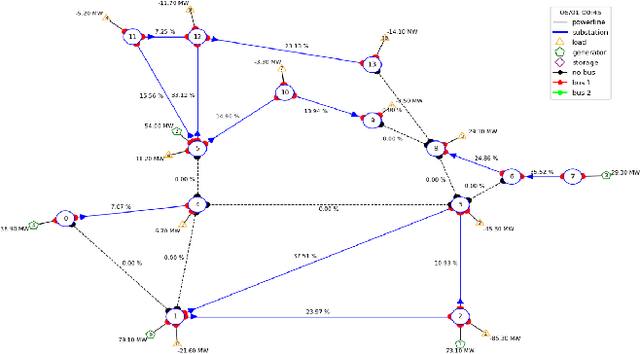

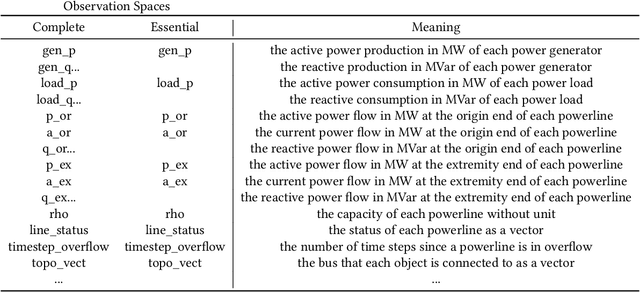
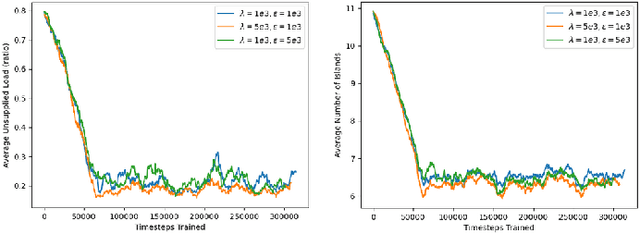
Abstract:Traditional power grid systems have become obsolete under more frequent and extreme natural disasters. Reinforcement learning (RL) has been a promising solution for resilience given its successful history of power grid control. However, most power grid simulators and RL interfaces do not support simulation of power grid under large-scale blackouts or when the network is divided into sub-networks. In this study, we proposed an updated power grid simulator built on Grid2Op, an existing simulator and RL interface, and experimented on limiting the action and observation spaces of Grid2Op. By testing with DDQN and SliceRDQN algorithms, we found that reduced action spaces significantly improve training performance and efficiency. In addition, we investigated a low-rank neural network regularization method for deep Q-learning, one of the most widely used RL algorithms, in this power grid control scenario. As a result, the experiment demonstrated that in the power grid simulation environment, adopting this method will significantly increase the performance of RL agents.
Identifying Exoplanets with Machine Learning Methods: A Preliminary Study
Apr 01, 2022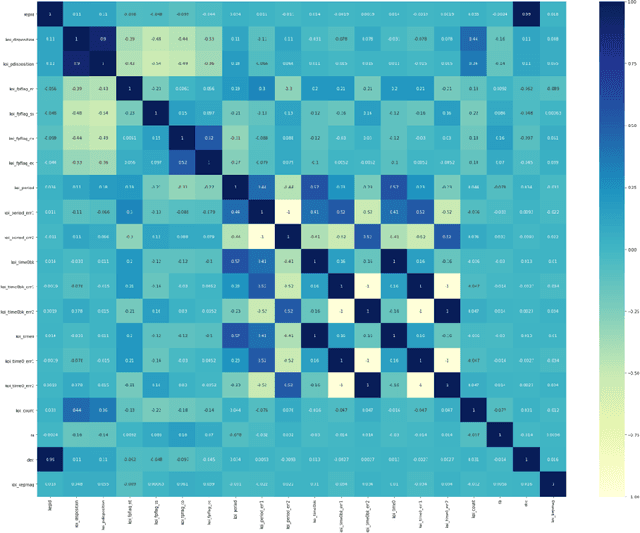
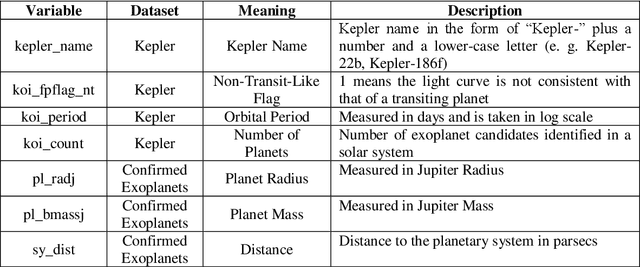
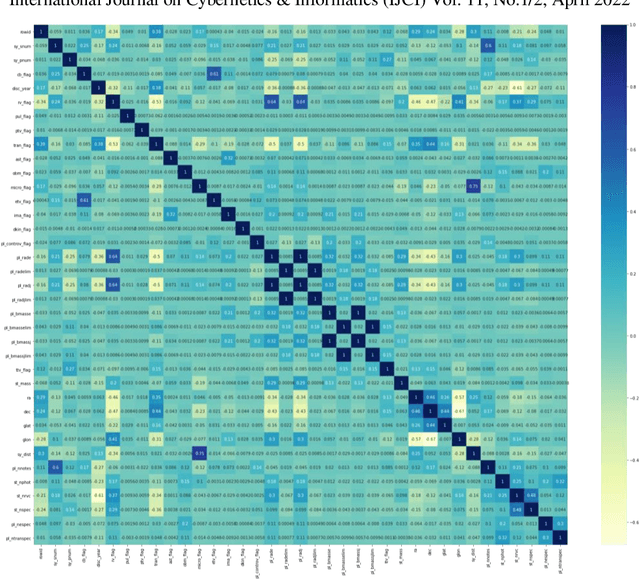
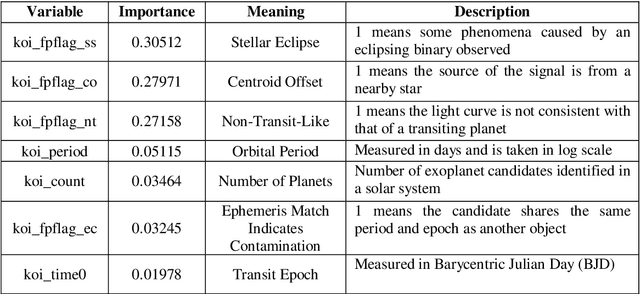
Abstract:The discovery of habitable exoplanets has long been a heated topic in astronomy. Traditional methods for exoplanet identification include the wobble method, direct imaging, gravitational microlensing, etc., which not only require a considerable investment of manpower, time, and money, but also are limited by the performance of astronomical telescopes. In this study, we proposed the idea of using machine learning methods to identify exoplanets. We used the Kepler dataset collected by NASA from the Kepler Space Observatory to conduct supervised learning, which predicts the existence of exoplanet candidates as a three-categorical classification task, using decision tree, random forest, na\"ive Bayes, and neural network; we used another NASA dataset consisted of the confirmed exoplanets data to conduct unsupervised learning, which divides the confirmed exoplanets into different clusters, using k-means clustering. As a result, our models achieved accuracies of 99.06%, 92.11%, 88.50%, and 99.79%, respectively, in the supervised learning task and successfully obtained reasonable clusters in the unsupervised learning task.
* 12 pages with 9 figures and 2 tables
 Add to Chrome
Add to Chrome Add to Firefox
Add to Firefox Add to Edge
Add to Edge